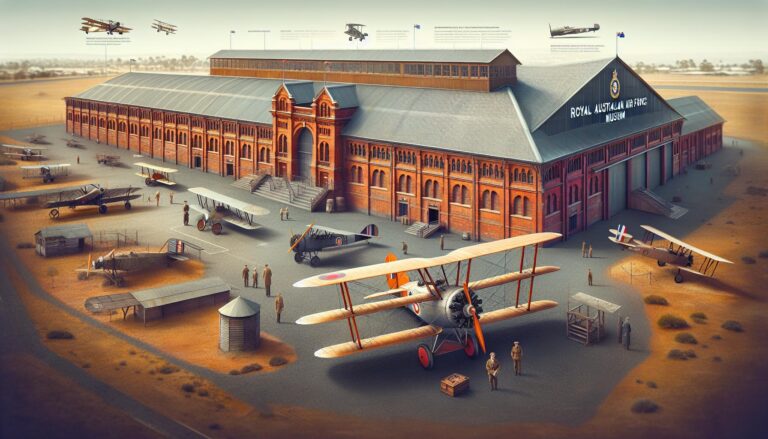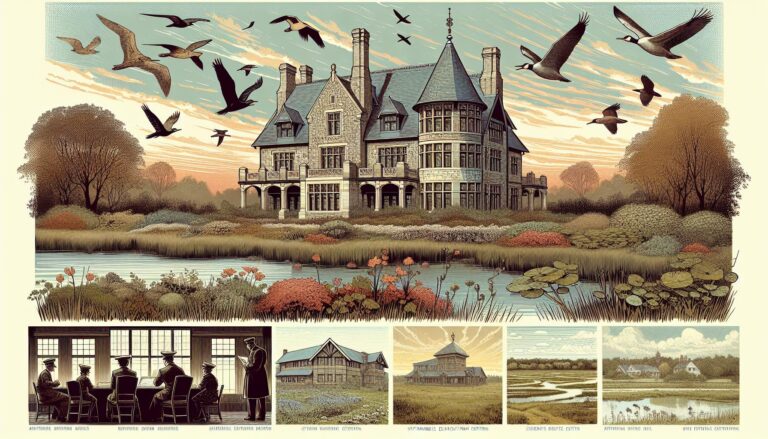Point Cook: From Aviation Roots to Suburban Bliss – A Comprehensive History and Timeline
Indigenous Connection to Point Cook
Diving deeper into the history of Point Cook, it’s essential to acknowledge and pay respect to the original custodians of this land, the Kulin Nation. This diverse collective of Indigenous Australian groups has a profound bond with the area, a connection that continues to resonate through the landscape of Point Cook. Their intricate knowledge and spiritual relationship with the land have left an indelible mark, shaping not only the geographical aspect but also the cultural heritage of Point Cook.
The Kulin Nation’s connection with Point Cook spans thousands of years, predating any European settlement. They utilised the land for its rich natural resources, including the vast array of flora and fauna. The area was particularly revered for its abundance in wildlife, providing the Kulin Nation with food, clothing, and materials for tools and shelter. This deep relationship with the environment is a testament to their advanced understanding and sustainable living practices.
Point Cook’s Indigenous history is laden with stories of cultural gatherings, trading routes, and spiritual rituals that took place across this vibrant landscape. These activities were not just about survival; they were integral parts of a sophisticated social and economic system. Sacred sites, some of which still stand today, serve as poignant reminders of the area’s deep-seated spiritual significance to its original inhabitants.
As I delve into the layers of Point Cook’s history, it becomes clearer that the Kulin Nation’s legacy is a vital component of the area’s identity. Their resilience, wisdom, and profound respect for the land are qualities that continue to inspire the community. It’s a reminder that the history of Point Cook isn’t solely a tale of development and progress but a multifaceted narrative that weaves together the stories of its first peoples with the fabric of its present and future.
Preserving and honouring these connections is not just about looking back; it’s about recognising the enduring influence of the Kulin Nation on Point Cook today. Community initiatives and local organisations are increasingly collaborating with Indigenous groups to ensure that this rich history is not only remembered but celebrated. From educational programs to public art,
Point Cook is finding new ways to acknowledge and incorporate Indigenous culture and heritage into its evolving story.
Early European Settlement and Pastoral History
After exploring the intense and rich history of the Kulin Nation’s connection to Point Cook, it’s important to look at the next chapter in the story: the arrival of European settlers. My journey into this era has revealed a complex and often challenging period that has shaped the landscape and identity of Point Cook in profound ways.
The European settlement at Point Cook began in the 1830s. By the mid-1830s, Point Cook was swept into the pastoral boom, with large portions of land being claimed for sheep grazing. The pastoral era marked a significant change in the landscape, transforming the natural ecosystem into cultivated farmland. It’s striking to consider how these early pastoralists, including notable figures like Thomas Chirnside, came to dominate the region, both economically and socially.
Chirnside, in particular, played a monumental role in shaping Point Cook’s pastoral history. Arriving in the area in the 1840s, his investment and innovation in sheep farming led to the establishment of the Werribee Park Estate. This move not only solidified his status but also marked the beginning of a stark transformation in the local landscape and lifestyles.
The agricultural pursuits at Point Cook were not without their challenges, however. Issues like land disputes, environmental changes, and the integration of new technologies continually tested the resolve and adaptability of the early settlers. It’s intriguing to delve into how these settlers navigated their challenges, from fencing vast expanses of land to experimenting with different types of livestock, each decision leaving a lasting impact on the area’s development.
Reflecting on this era, it’s clear that the seeds of modern Point Cook were sown during these early days of European settlement and pastoral enterprise. The landscape, forever altered, tells a story of perseverance, adaptation, and the often overlooked complexities of integrating new ways of life into the Australian bush. As I dive deeper into the narratives of these early settlers, it becomes ever more apparent how their decisions and struggles have laid the groundwork for the vibrant community that Point Cook is today.
Aviation Legacy and Military Presence
As I delve deeper into the historical tapestry of Point Cook, it’s impossible not to be captivated by its rich aviation legacy and enduring military presence. This facet of Point Cook’s history isn’t just a footnote; it’s a pivotal chapter that has shaped its identity in profound ways.
The genesis of Point Cook’s aviation journey dates back to 1913, when the Australian Government purchased land here to establish the country’s first military airbase. It’s fascinating to think that Point Cook is the cradle of the Royal Australian Air Force (RAAF), and its runways have witnessed the takeoffs and landings of countless aircraft, charting the course of Australia’s aviation history.
Point Cook Air Base, as it was known then, quickly became a hub of innovation and training, shaping the skills of many aviators who would go on to play essential roles in both World Wars. It’s remarkable to consider that the base that trained pilots for reconnaissance missions over Gallipoli or aerial battles in the skies of Europe is just a stone’s throw from where I’m writing this.
The interwar period saw Point Cook continuing to evolve. It wasn’t merely a military installation but became a beacon of aviation progress, contributing to both military and civil aviation advancements. The air base’s presence fostered a sense of security and propelled the local community into the national spotlight, underlining its strategic and symbolic importance to the nation.
As we progressed into the second half of the 20th century, Point Cook’s air base didn’t rest on its laurels. It embraced change, adapting its facilities and training programs to keep pace with technological advancements in aviation. From propeller-driven aircraft to the advent of jets, the base mirrored the evolution of military aviation, always at the forefront of training excellence.
Today, the legacy of Point Cook’s aviation history is preserved at the RAAF Museum, a treasure trove of artefacts, aircraft, and stories that immortalise its pioneering spirit. Visiting the museum, one can’t help but feel a profound connection to the aviators of yesteryear, whose courage and innovation have left an indelible mark on this community.
Development into a Modern Suburban Hub
After extensively exploring Point Cook’s aviation roots, I found myself delving into its transformation into a modern residential area. This part of its history is just as fascinating, marked by rapid growth and an influx of amenities catering to its burgeoning population.
In the late 1990s, Point Cook began to experience a significant shift. Once known primarily for its military and aviation significance, the area started to attract developers and families alike, drawn by its proximity to Melbourne and the promise of a tranquil lifestyle amidst sprawling parks and waterways. The Saltwater Coast, a notable development, epitomized this shift, offering a blend of residential options, from stylish townhouses to spacious family homes, all within a master-planned community that emphasized sustainability and outdoor living.
The growth wasn’t just in housing. Alongside residential expansion, there came a boon in infrastructure and amenities. Shopping centres, schools, and healthcare facilities sprouted, transforming Point Cook from a historical footnote into a vibrant suburban hub. Stockland Point Cook Shopping Centre, one such development, quickly became a focal point for the community, offering a variety of shops, eateries, and entertainment options.
Education also received a boost. Recognizing the importance of supporting the area’s growing number of families, several new schools were established, catering to a range of educational needs and philosophies. From public to private, mainstream to alternative, Point Cook’s educational landscape flourished, reflecting the community’s diversity and commitment to fostering learning opportunities for all.
A key aspect of this development has been the deliberate preservation of the area’s natural beauty and historical significance. Planners and developers worked hand in hand to ensure that new developments did not erase Point Cook’s rich past but instead integrated it into the fabric of the suburban community. Walking trails, heritage sites, and the retention of significant landmarks like the RAAF Museum serve as constant reminders of Point Cook’s storied history, even as it marches towards a future of suburban idyl.
As I watched Point Cook evolve, it’s clear that its story is one of balance—between preserving the past and embracing the future, between fostering a close-knit community and ensuring the availability of modern conveniences. This delicate balancing act is perhaps what makes Point Cook so unique in the tapestry of Melbourne’s suburbs, a place where history and progress coexist in harmony, continually shaping its identity.
Conclusion
Reflecting on Point Cook’s journey from its early aviation days to a bustling suburban community has been quite the adventure. It’s fascinating to see how it’s transformed while still holding onto its rich history. The balance between preserving the past and welcoming new developments is what makes Point Cook truly special. I’ve loved diving into the stories that have shaped this area and hope you’ve found it as intriguing as I have. Here’s to the continued growth and prosperity of Point Cook, a place where history and progress walk hand in hand.







